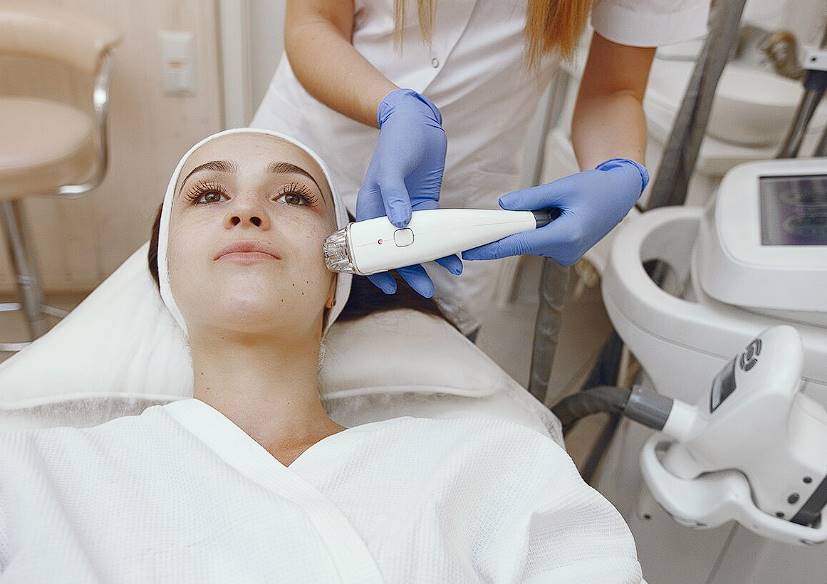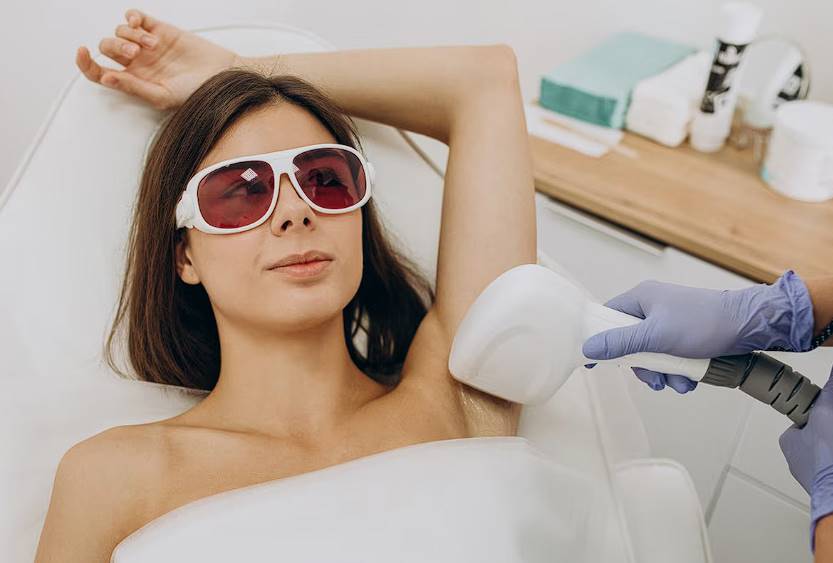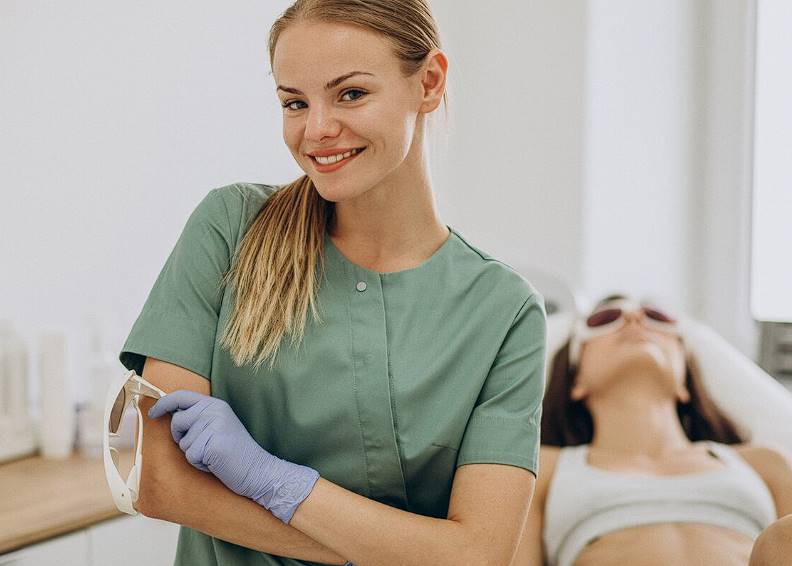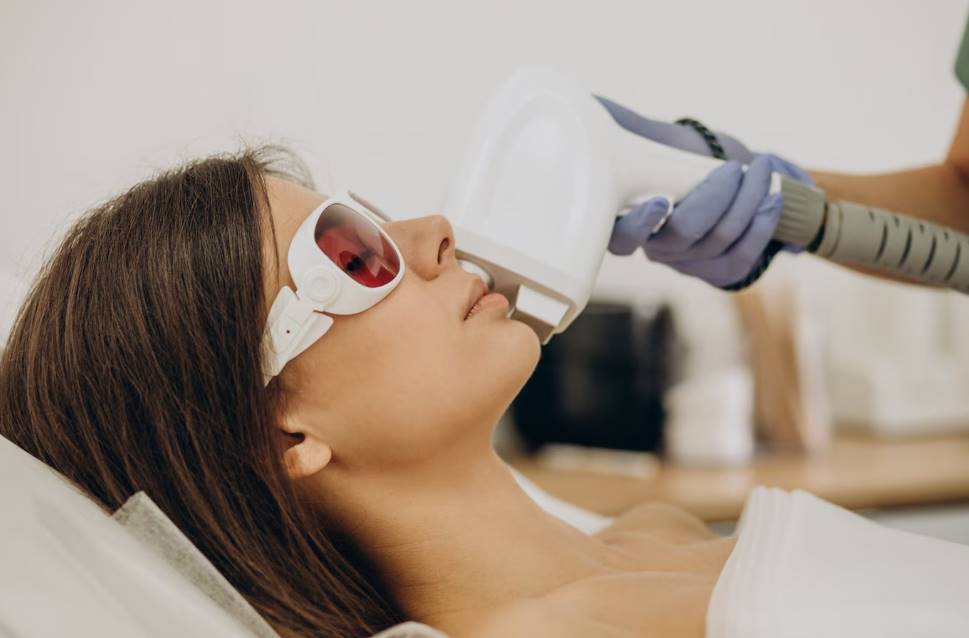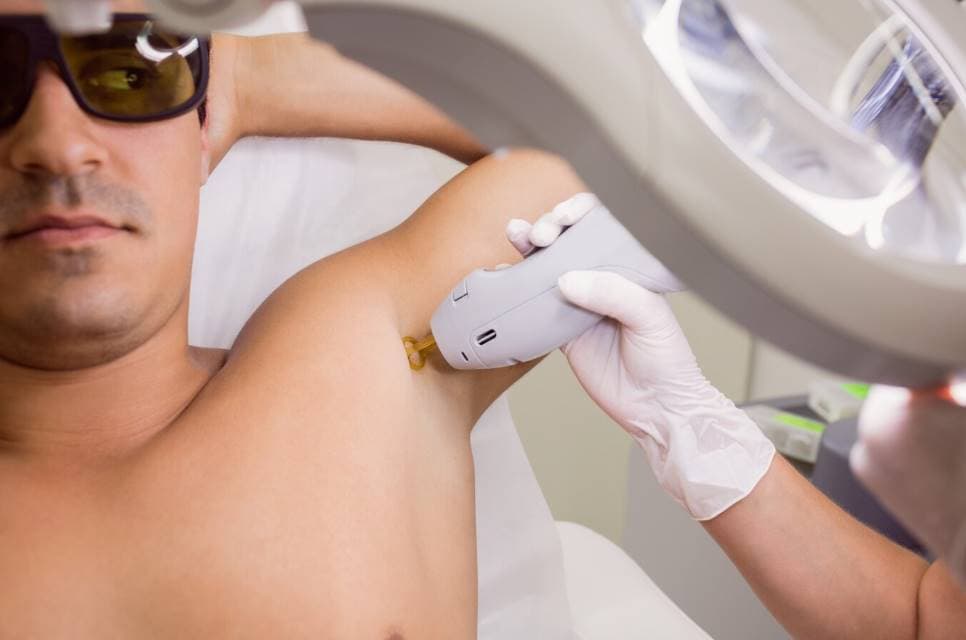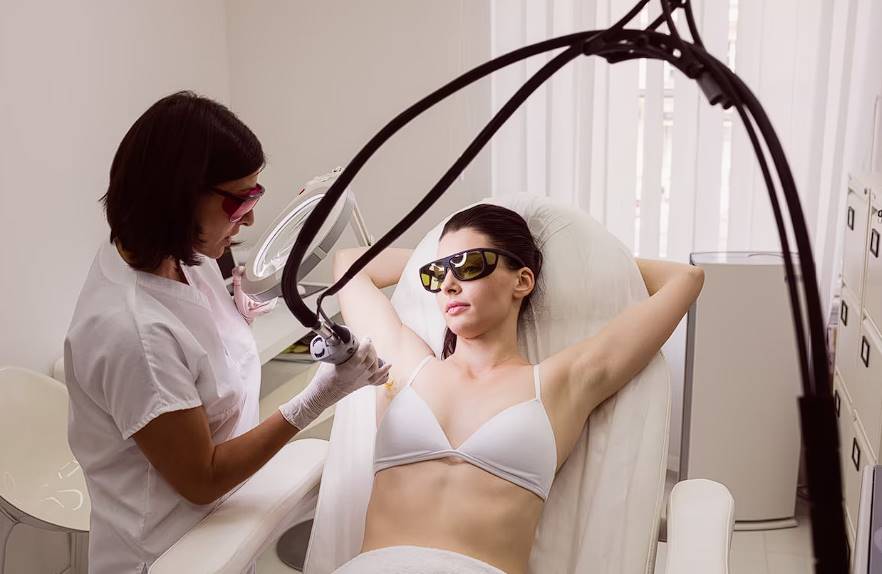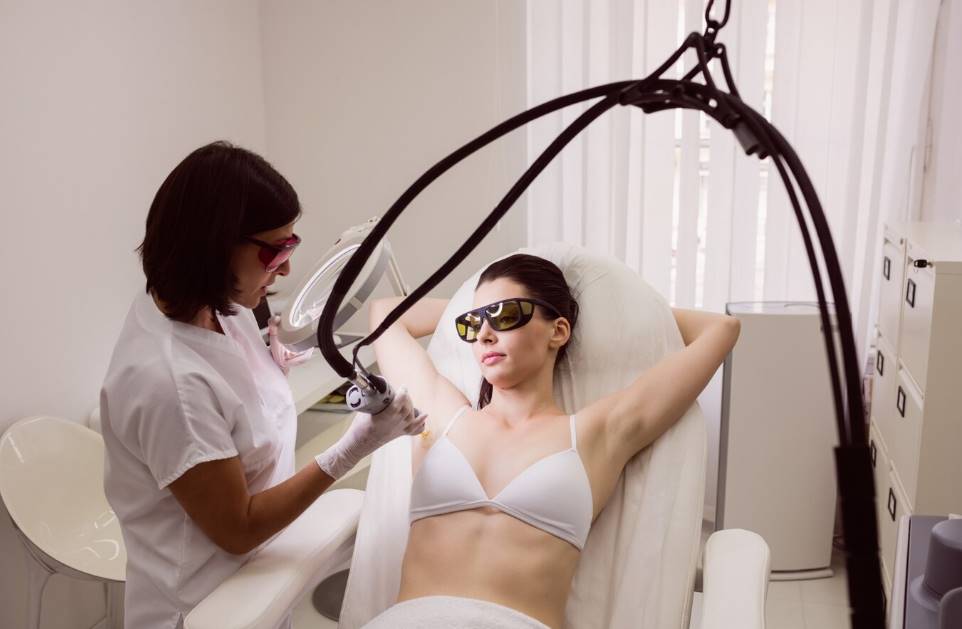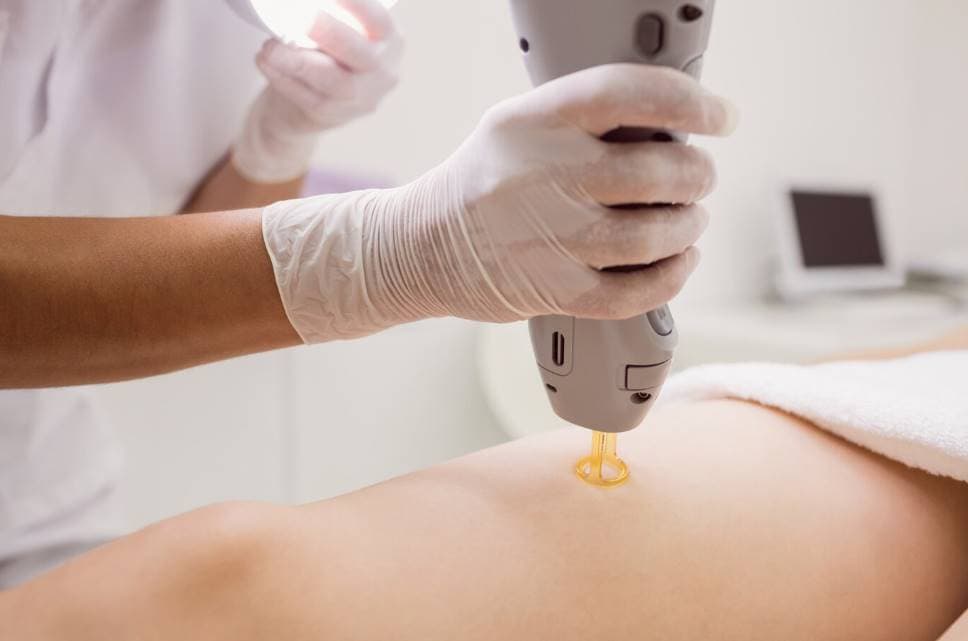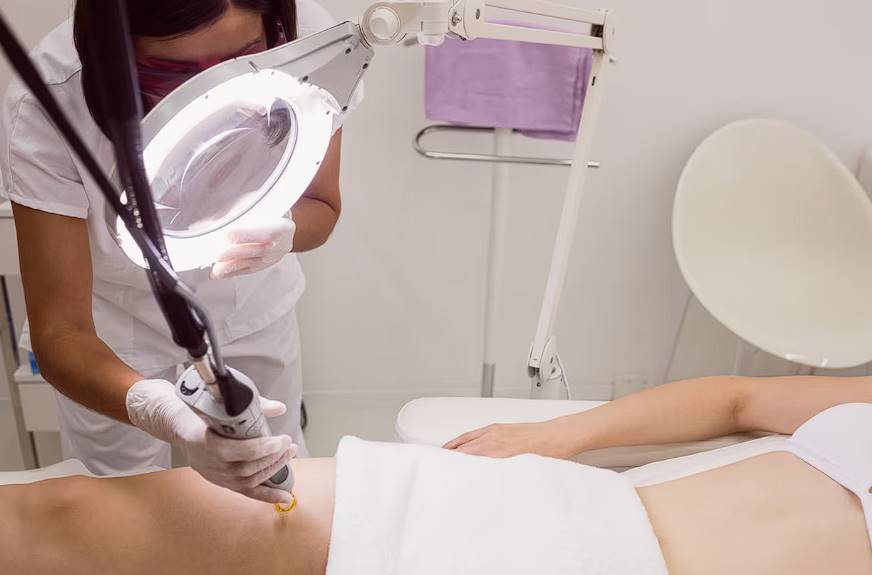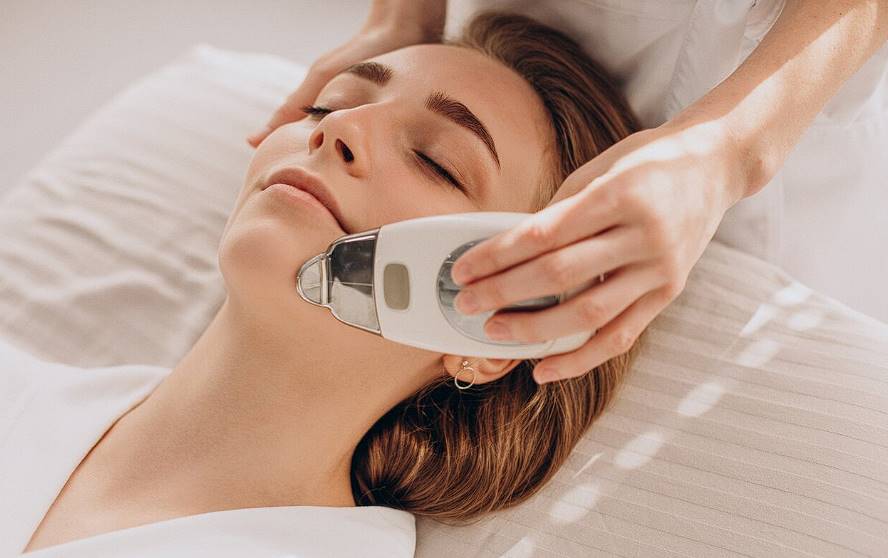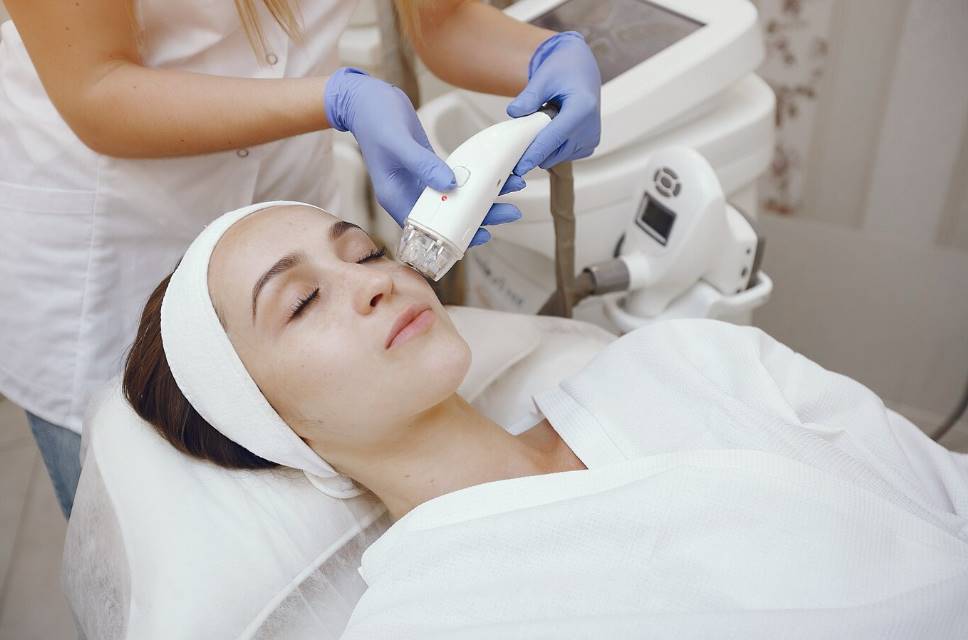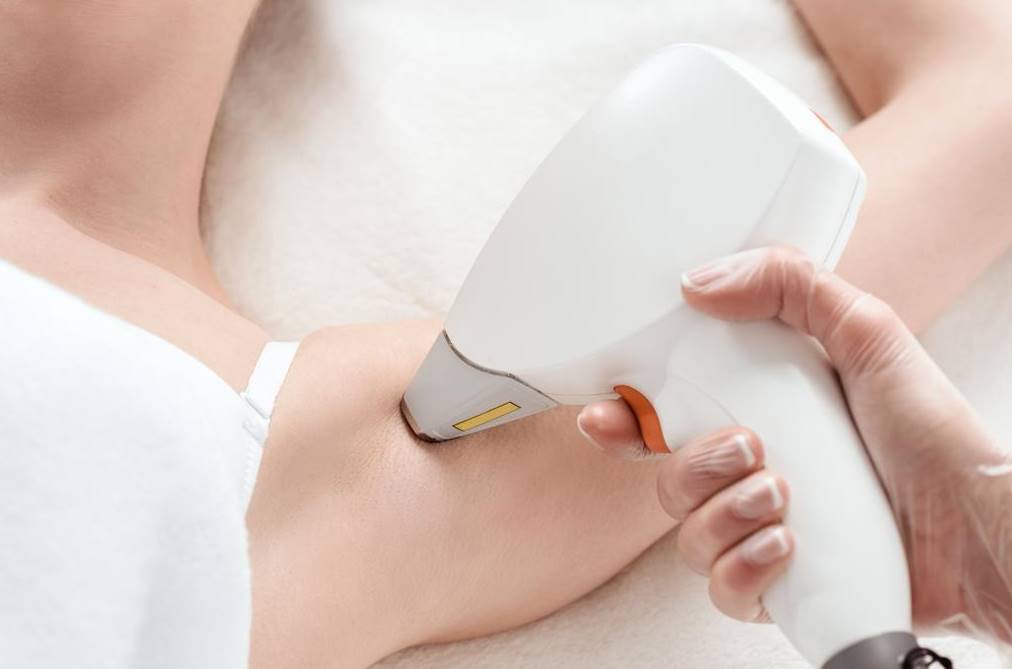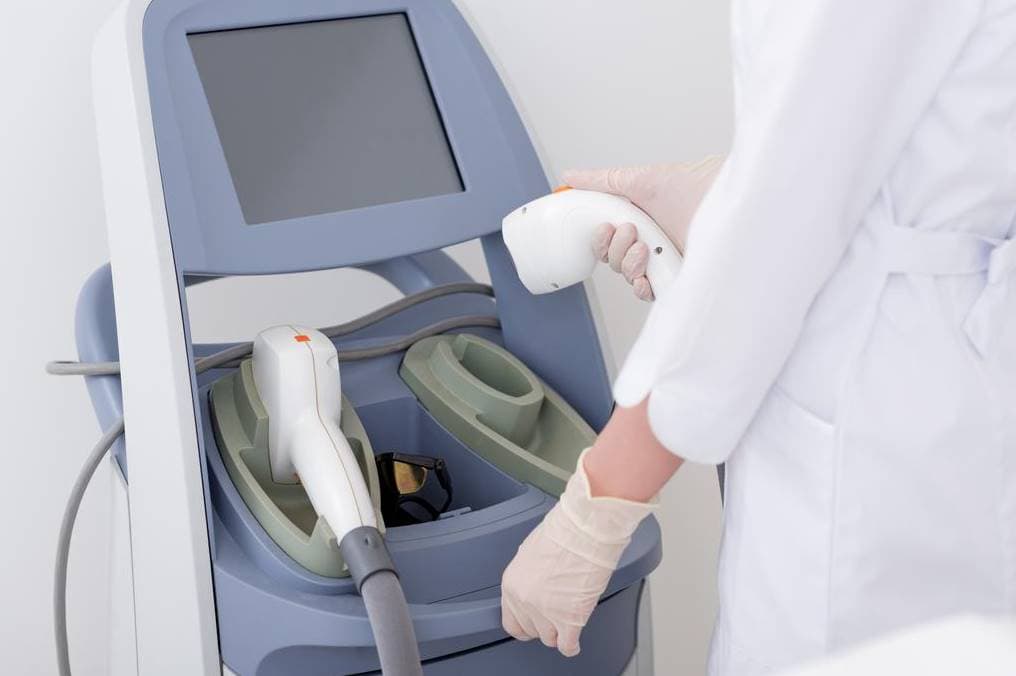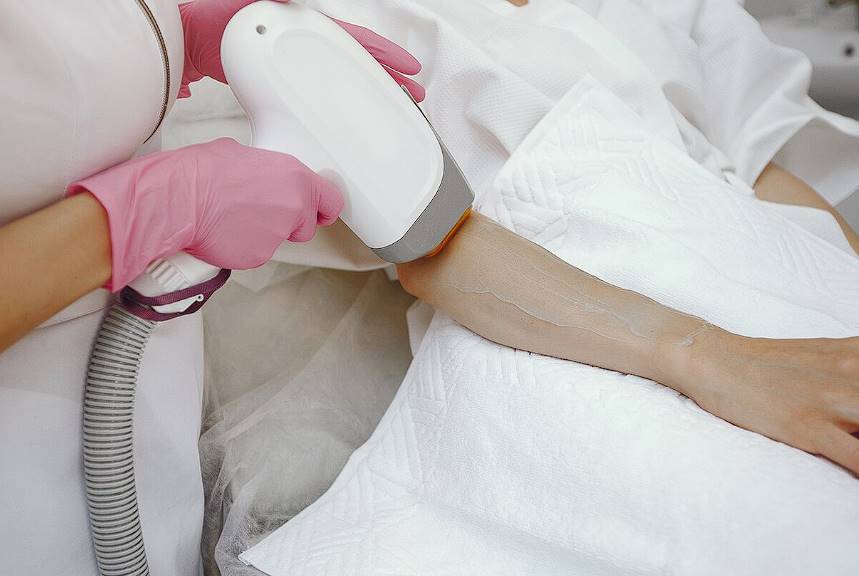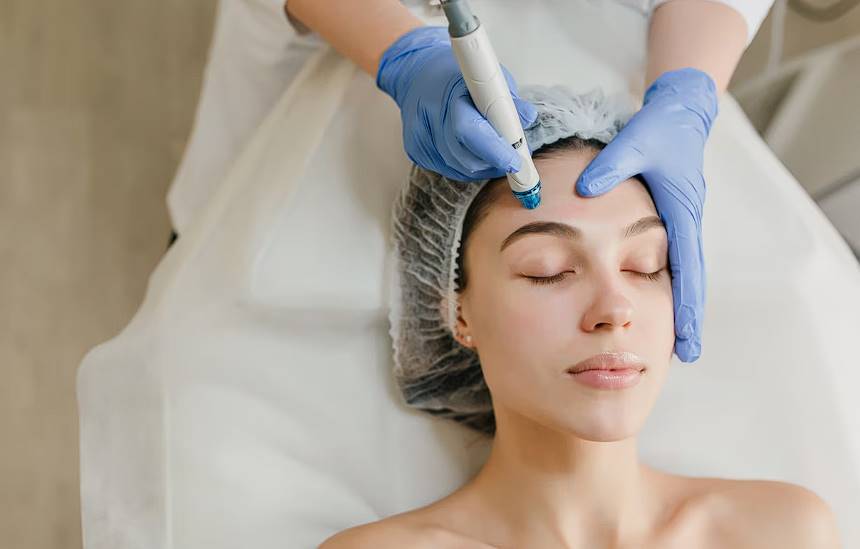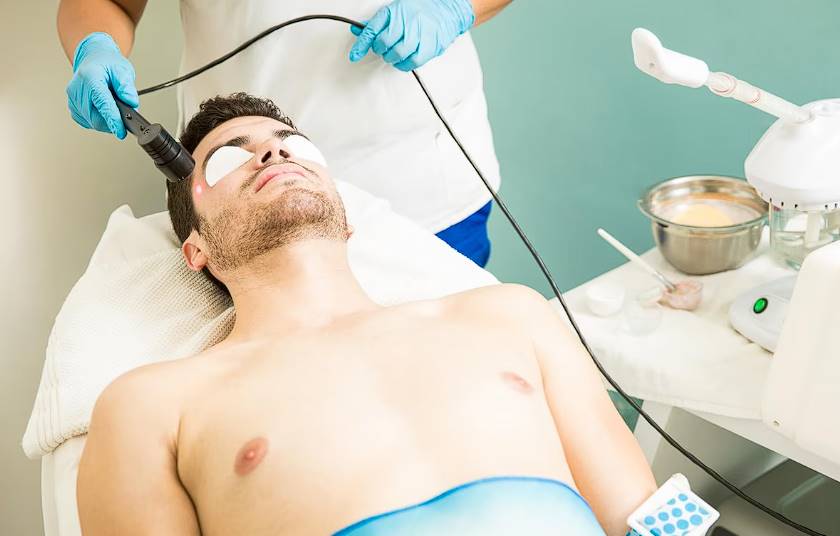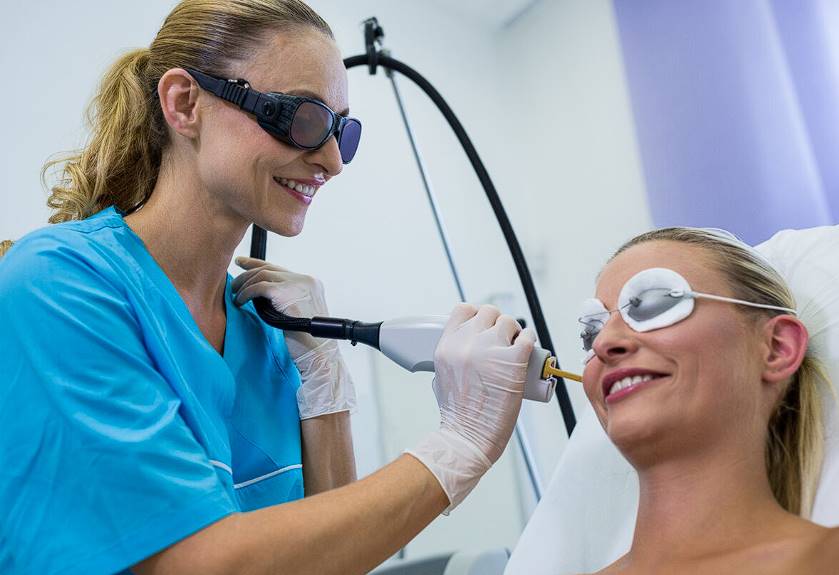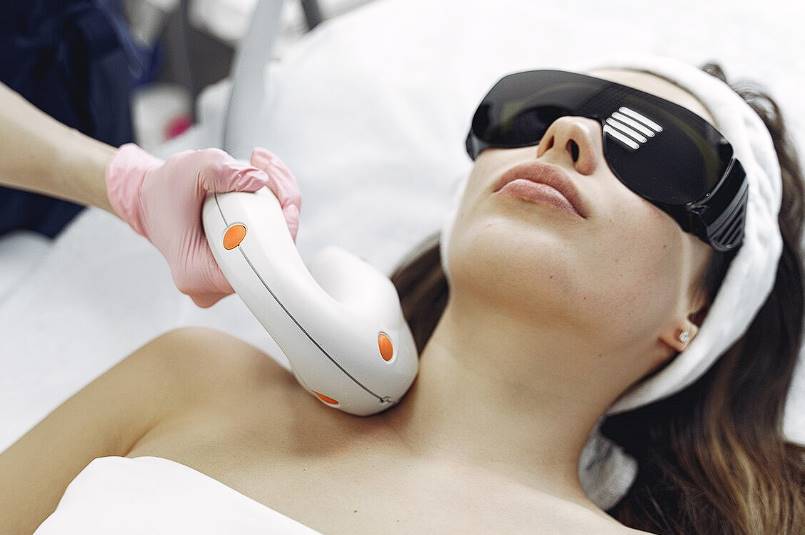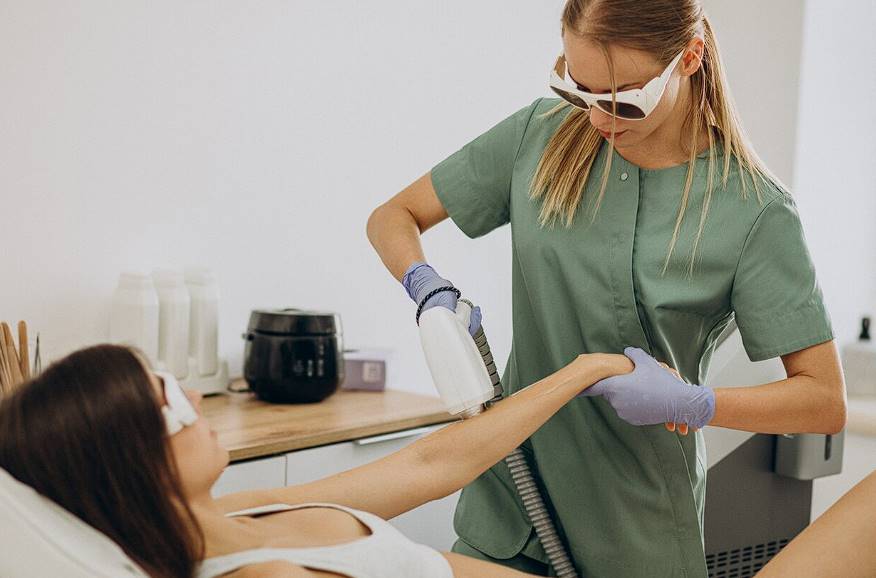For permanent hair reduction and silkier skin, laser hair removal (LHR) has quickly become a popular option. Its efficiency and ease of use have made it the go-to option for people who want to break their dependence on razors and wax strips for good.
Aftercare is crucial to maximising LHR outcomes, although this fact is often overlooked. Here, we go into the critical aftercare factors that not only help you achieve, but even improve, your Laser Hair Removal results.
In order to reap the full benefits of this revolutionary beauty therapy, it is crucial to understand and adhere to suitable aftercare practises, both immediately following the procedure and in the long run.
What Is Laser Hair Removal?
At the outset of this introduction to laser hair removal for guys, we will provide some background information. Just what is laser hair removal, exactly? In laser hair removal, a beam of light is directed through the epidermis and into the follicle, where it disables the hair's reproductive cycle without damaging the skin.
The hair's natural colour pigment has a crucial role. The laser focuses on the hair follicle, where the pigment is located, all the way to its root. The resulting heat then destroys the follicle, stopping further development.
Hair in the anagen (active growth) phase responds well to laser hair removal. When the hair is still in the follicle is the best time to style it. The laser's heat cannot reach the follicle if the hair is no longer attached to it.
Only around 20% of hair is in the anagen phase at any given moment, which is why most people require multiple treatments to achieve the desired effect. Only about 20% of hair can be treated by the laser at once.
After receiving therapy, hair will gradually break free from the follicle, rise to the skin's surface, and fall out. Diode and Nd: YAG lasers, the most cutting-edge hair-removal technologies, are used at most clinics and spas. They are effective on darker skin tones. Since blond, grey, and white hair lack significant pigments, they will not serve as effective conduits for the laser.
First Steps And Preparation
You should look for a plastic surgeon who has completed additional training beyond the requirements of general practise. Your doctor will evaluate your suitability for laser hair removal by reviewing your medical history and having you explain the procedure's potential risks, advantages, and your expected results.
You should stop waxing or plucking hairs for four to six weeks before your first laser hair removal session. These methods temporarily get rid of the hair follicles and roots that laser treatments aim to eliminate. When done properly, shaving is appropriate since it removes hairs while leaving hair follicles unharmed.
Shaving the area within the last 24 hours is advised so the laser can more accurately target hair follicles. Having stubble on your head can exacerbate the pain you experience after the laser treatment.

What You Can Expect
The average number of laser hair removal sessions needed is between two and six. The time between sessions varies from one facility to the next. Treatment may need to be repeated every four to eight weeks for places with rapid hair growth, such as the upper lip. Areas with slower hair growth, like the back, may require treatments every 12-16 weeks.
Special goggles will be used throughout each session to shield your eyes from the laser light. In the event that additional shaving is required, an assistance may do so. In order to alleviate any pain you may be experiencing, your doctor may choose to use a topical anaesthetic.
During The Procedure
The physician will place a handheld laser device against your skin. A cooling device at the laser's tip or a cold gel may be utilised to shield your skin and reduce the likelihood of adverse effects.
Once the laser is turned on by the doctor, the beam will go beneath the epidermis and into the hair follicles. The hair follicles are damaged by the laser's strong heat, which stops hair growth. The cooling device or gel may cause some discomfort, like a warm pinprick, and it will almost certainly feel chilly to the touch.
It may just take a few minutes to treat a tiny area like the top lip. It may take longer than an hour to treat a larger area, such the back.
After The Procedure
In the hours following laser hair removal, you may experience some redness and swelling.
Apply ice to the region to be treated to alleviate any pain. In the event of a skin reaction following laser hair removal, your doctor may prescribe a steroid cream.
Sunlight and tanning beds should be avoided for at least six weeks after laser hair removal and in between treatments. Put on sunscreen every day with at least 30 SPF broad spectrum protection.
Before Treatment:
- It is essential to stay out of the sun, tanning beds, and fake tans for at least 4 weeks before treatment and for a week following. As such, careful treatment planning is required.
- For three to four weeks after treatment, you should refrain from bleaching, waxing, tweezing, plucking, threading, and using any depilatory chemicals on the treated region. For the laser to be effective, the hair must be in the follicle.
- We cannot treat areas with lengthy hair, so please shave the area before your appointment.
- One week before treatment, you should cease using any topical medications (such glycolic, tretinoin, or retinol creams) that make your skin more photosensitive. For a period of 6 months previous to laser therapy, taking Accutane is not recommended.
- Antibiotics require a 10-day waiting period after treatment ends before laser surgery can be performed.
- There should be a 2-week gap between laser treatments and any chemical peels or other skin resurfacing treatments.
- All cosmetics, including lotions, creams, makeup, and deodorant, must be removed before laser treatment may begin.
- You will be asked to sign a permission form confirming that you have read and understood the pre- and post-treatment advice provided to ensure the highest level of treatment safety.
After Treatment:
- After treatment, some patients have temporary redness and swelling that can last up to two hours. It may feel like a sunburn and last for two or three days.
- For the first several hours after treatment, use ice in 15-20 minute increments to ease any pain or swelling. If symptoms persist, you can take this for up to three days.
- Unless there is blistering, you can apply makeup right after your treatment.
- Light, loose clothing should be worn on the body to prevent overheating. Larger treatment regions and darker skin types are more prone to hyperpigmentation from heat retention, hence PrivaRx Aloe Cort is advised for usage in these instances.
- To prevent follicultitis, you should rest for 12-24 hours after therapy.
- Stay out of the sun for at least a week and always use sunscreen.
- Picking or scratching at the treated skin is not recommended. Avoid using any other methods of hair removal (waxing, electrolysis, tweezing, etc.) that could potentially damage the hair follicle.
- In the 24 hours following treatment, avoid using a hot tub, sauna, or very hot shower or bath.
- After three days, you can gently wash the area and wipe it dry. Wait 7 days following therapy before you scrub.
- After 5-20 days, treated hair will begin to fall out naturally. Although this may look like fresh hair growth, it is not and should fade away as hair thinning continues.
How To Get The Most Out Of Your Laser Hair Removal Treatments
Avoid Sun Exposure And Tanning
For at least a week before and after your appointment, you should stay out of the sun as much as possible (meaning, anything that requires you to be outside for longer than 30 minutes).
Protect your skin from the sun's harmful rays by applying a zinc oxide sunscreen, wearing protective clothing, and limiting your time spent outdoors during the midday and early afternoon.
Reactions to the laser, such as discolouration, burns, or blisters, are more likely to occur on skin that has been damaged in some way, such as by sunburn, peeling, tanning beds, or tanning lotions. Wait at least two weeks, or until the skin's colour is nearly identical to your natural skin tone, before undergoing treatment.
Shave Before Each Treatment
The laser can more effectively target the hair follicles if the hair is shaved off first. Trim the hair from the area 12 to 24 hours before your visit. The laser's efficacy is diminished if the hair on the skin's surface absorbs and dissipates the light before it reaches the follicle, especially if the hair is longer or denser. To ensure that the laser energy is directed at the follicle and not the surface hair, shaving the treatment region is recommended.
Avoid Plucking And Waxing
Hair follicle pigment is what laser hair removal actually aims at. When you remove your hair by plucking or waxing, you remove the follicle along with the hair. The laser's ability to destroy the follicle and prevent further hair growth depends on being able to reach it. For at least four weeks before to your laser hair removal appointment, you should refrain from using these methods.
Exfoliating
The laser's radiation can more efficiently reach the targeted hair follicles once the skin has been exfoliated to remove dead skin cells, clear pores, and create a smoother surface. Ingrown hairs are a common side effect of laser hair removal, but this can help prevent them. Exfoliation gets rid of dead skin cells that can clog pores and trap hair, preventing ingrown hairs and the resulting irritation, redness, and pimples.
The therapy will be more bearable if you exfoliate beforehand. Absorption of laser energy by dead skin cells and other material on the skin's surface can raise treatment temperatures and patient discomfort.
Follow The Recommended Treatment Schedule
To get the best results from laser hair removal, patients usually need numerous treatments. Your hair colour, skin type, and treatment area will all play a role in determining the optimal amount of sessions. If your technician has given you a treatment schedule, stick to it.
Due to the fact that laser hair removal treatments are most effective when applied consistently, regular sessions are required. Results may be slowed or diminished if sessions are missed or if they are spaced too far apart.
Communicate Openly With Your Technician
It is crucial to be completely honest with your provider about how you are feeling during your laser hair removal treatment, as well as what you expect to happen. Any time your health or the prescriptions you take change, make sure your doctor knows about it.

Take Care Of Your Skin Post-Treatment
Skin care after laser hair removal sessions is essential for healing and optimal outcomes. For at least 24 hours after treatment, you should avoid hot showers, saunas, and steam rooms, which might enhance skin sensitivity. Use aloe vera or a calming gel like Restorative Gel to soothe the affected region and bring down any inflammation.
Wear loose fitting clothing and avoid rubbing the treated region to reduce the risk of infection and scarring. Be sure to carefully adhere to all post-treatment recommendations for the best possible recovery and outcome.
Healing And Recovery Time
It's important to give your skin time to recover between laser hair removal sessions. In order to speed up the healing process and reduce the risk of problems, it's crucial to adhere to the aftercare recommendations provided. Care for your skin and get the most out of your treatments by sticking to aftercare routines and letting your skin fully recover in between sessions.
Individual Response To Treatment
Because everyone's skin and hair are different, so too can be their reactions to laser hair removal. Some patients report improvement after just a few sessions, while others need longer time in treatment. Due to individual variation, it's best to approach this with an open mind and plenty of patience.
Customized Treatments
Alterations to your laser treatment plan may be necessary if your skin's condition or response to treatment evolves over time. Treatment plans can be modified to improve outcomes and account for unexpected developments when they are tailored to the individual patient. In order to achieve the best possible outcomes, technicians may make adjustments to the laser settings or method of treatment based on your input.
Conclusion
Laser hair removal (LHR) is a common and effective way to get rid of hair permanently and get smoother skin. It includes sending a beam of light through the epidermis to the follicle, where it stops the hair from reproducing without hurting the skin.
The laser focuses on the hair shaft, where the pigment is, all the way to the root. At any given time, only about 20% of hair is in the anagen phase. This means that most people need more than one treatment to get the results they want.
To get the best effects from LHR, it is important to know and follow the right aftercare practises, both right after the procedure and over time. Before the procedure, you must not wax or pluck hairs for four to six weeks and shave the area within the last 24 hours so that the laser can target hair follicles more correctly.
The average number of laser hair removal sessions needed is between two and six. For areas with fast hair growth, like the upper lip, treatments are repeated every four to eight weeks. For areas with slower hair growth, like the back, treatments are repeated every 12 to 16 weeks. During each treatment, special glasses are worn to protect the eyes from the laser light.
Patients may have redness and swelling after the process. This can be helped by putting ice on the treated area, staying out of the sun and tanning beds, and using sunscreen with at least 30 SPF broad spectrum protection every day.
Some people may have minor redness and swelling after treatment. This can last up to two hours. For the first few hours, use ice for 15 to 20 minutes at a time, put on makeup right away, and wear light, open clothes.
PrivaRx Aloe Cort is suggested for darker skin types and larger areas that need to be treated. To avoid folliculitis, you should rest for 12 to 24 hours. Stay out of the sun for at least a week and use sunscreen every time you go outside. Don't pick or scratch the skin that has been treated.
After three days, wash the area gently and wait seven days before you scrub. After 5–20 days, hair that has been treated will start to fall out on its own. To get the best results from laser hair removal, you should stay out of the sun and don't tan for at least two weeks before treatment. Before each treatment, shave the area to be treated 12 to 24 hours ahead of time to make sure the laser energy goes to the cell.
The treatment area should be scrubbed to get rid of dead skin cells, clear out pores, and make the surface smoother. This helps keep hair from getting stuck and causing pain. Follow the treatment plan that was given to you.
This will depend on your hair colour, skin type, and the area that needs to be treated. Talk to your technician about how you're feeling and what you expect during the treatment.
After treatment, take care of your skin by avoiding hot baths, saunas, and steam rooms, using aloe vera or a calming gel like Restorative Gel, wearing loose-fitting clothes, and not rubbing the treated area. For the best recovery and result, it is important to follow the aftercare instructions.
If your skin's condition or reaction to treatment changes over time, you may need to try different treatments. Technicians may change the laser settings or the way they treat you based on what you tell them to get the best results.
Content Summary
- Laser Hair Removal (LHR) is increasingly popular for permanent hair reduction and smoother skin.
- The role of aftercare in LHR is often underestimated but is crucial for optimising results.
- Proper aftercare practices are essential immediately after the procedure and in the long term.
- LHR works by directing a light beam through the epidermis to the hair follicle, where it disrupts the hair's growth cycle.
- LHR is most effective on hair in the anagen (active growth) phase.
- Typically, multiple treatments are needed for comprehensive hair reduction as only about 20% of hair is in the anagen phase at any time.
- The use of cutting-edge technologies like Diode and Nd: YAG lasers is common in most clinics.
- These advanced lasers are particularly effective on darker skin tones.
- LHR is less effective on blond, grey, and white hair due to the lack of significant pigments.
- Consult a qualified plastic surgeon who has undergone additional training for assessing your suitability for LHR.
- Waxing and plucking should be avoided for four to six weeks prior to LHR.
- Shaving the treatment area within the last 24 hours before the procedure is advised.
- An average of two to six LHR sessions are generally required.
- The frequency of sessions depends on the area of treatment; areas like the upper lip may require more frequent treatments.
- During the procedure, special goggles are worn to protect your eyes from laser light.
- Topical anaesthetics may be applied to minimise discomfort.
- After the treatment, mild redness and swelling are common.
- Applying ice can help alleviate any post-procedure pain.
- Exposure to sunlight should be avoided for at least six weeks post-procedure.
- SPF 30 broad-spectrum sunscreen is recommended for daily use after LHR.
- Avoid using bleaching agents and depilatory chemicals for three to four weeks post-treatment.
- Topical medications making your skin photosensitive should be stopped a week prior to the treatment.
- There should be a two-week gap between LHR and other skin treatments like chemical peels.
- All cosmetics must be removed before initiating the LHR process.
- Temporary redness and swelling post-treatment may last up to two hours.
- Use ice in 15-20 minute increments to ease any discomfort, potentially lasting up to three days.
- Makeup can be applied immediately after treatment, provided there is no blistering.
- Wear light, loose clothing post-procedure to avoid overheating and potential hyperpigmentation.
- Rest for 12-24 hours post-treatment to prevent folliculitis.
- Avoid hot tubs, saunas, or very hot showers for the first 24 hours after LHR.
- Avoid sun exposure and tanning at least a week before and after each LHR session.
- Shaving before each treatment helps the laser target hair follicles more effectively.
- Avoid plucking and waxing for four weeks prior to LHR, as it removes the hair follicles the laser targets.
- Exfoliating before LHR can help the laser reach targeted hair follicles more effectively.
- Exfoliation can also help prevent ingrown hairs, a common side effect of LHR.
- Stick to the treatment schedule recommended by your technician for optimal results.
- Open communication with your technician is crucial for tailored treatments and managing expectations.
- Post-treatment skin care is vital; avoid hot showers and use aloe vera or a calming gel.
- Healing and recovery time between LHR sessions is essential for optimal results.
- Individual responses to LHR can vary, requiring different lengths of treatment time.
- Customised treatment plans can enhance LHR results.
- Treatment plans may need adjustments based on your skin's response to the laser.
- LHR is a convenient alternative to razors and wax strips, especially when aftercare is properly managed.
- The cooling device or gel used during the procedure may feel like a warm pinprick.
- Treatment duration varies; smaller areas may take minutes, while larger areas like the back, may take over an hour.
- Pre-treatment preparations include avoiding sun exposure, tanning beds, and certain topical medications.
- Antibiotics necessitate a 10-day waiting period before undergoing LHR.
- Patients are required to sign a consent form acknowledging the pre and post-treatment advice for maximising treatment safety.
- After 5-20 days post-treatment, the treated hair begins to fall out naturally.
- Following the recommended treatment schedule can significantly expedite the rate of hair reduction.
Frequently Asked Questions
Aftercare is vital in LHR because it helps promote skin recovery, minimises potential side effects, and ultimately enhances the overall effectiveness of the treatment. Proper aftercare routines ensure that you get the best possible results from your LHR sessions.
After a session, it's essential to soothe the treated area by applying a cooling gel or ice pack to reduce discomfort and redness. Additionally, be diligent about sun protection and avoid hot showers, saunas, and activities that can increase skin temperature.
To maintain LHR results, continue to protect your skin from sun exposure, moisturise the treated area regularly, and follow any recommended maintenance sessions. Staying committed to a sun-safe and moisturising routine is key to sustaining hair reduction.
It's advisable to avoid harsh skincare products immediately after LHR, as your skin may be sensitive. Consult your practitioner for recommendations on suitable products. Once your skin has recovered, you can typically resume your regular skincare routine.
Potential side effects of LHR include temporary redness, swelling, hyperpigmentation, or hypopigmentation. Proper aftercare, such as avoiding sun exposure and using gentle skin care products, can help minimise these side effects and support your skin's healing process.
